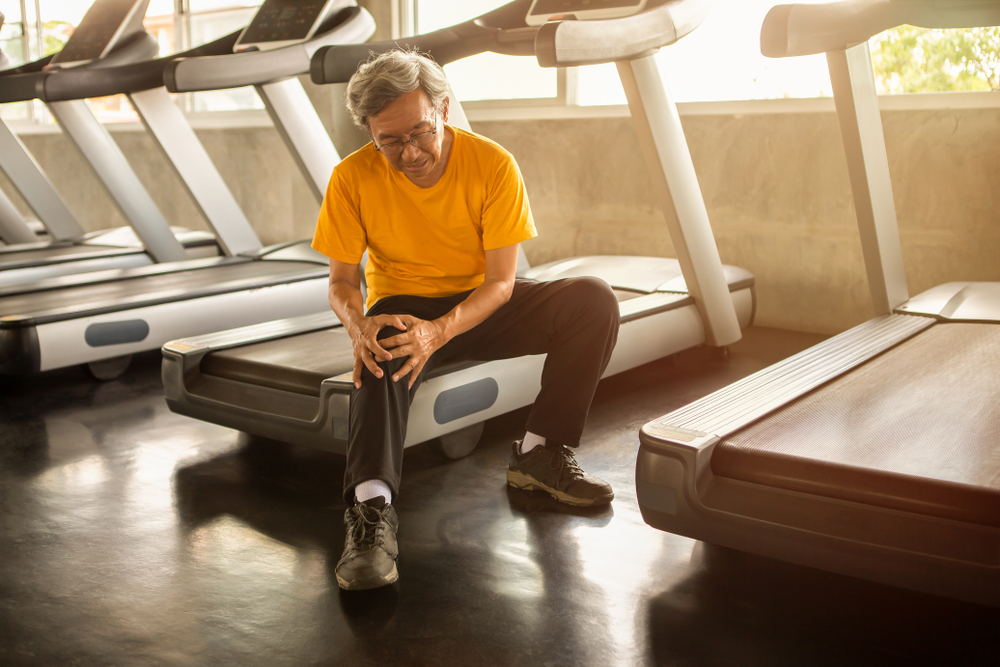 Treadmills have been utilized for a long time. From runners looking to escape extreme weather conditions, looking to pace train, and runners wanting flexibility with incline and decline – these machines have many benefits. From beginners to advanced athletes alike, treadmills can be a vessel of cardiovascular and muscular strengthening and can be used for various training programs and purposes.
Treadmills have been utilized for a long time. From runners looking to escape extreme weather conditions, looking to pace train, and runners wanting flexibility with incline and decline – these machines have many benefits. From beginners to advanced athletes alike, treadmills can be a vessel of cardiovascular and muscular strengthening and can be used for various training programs and purposes.
Treadmill Impact
Even though treadmills are adaptable to just about anyone (and are perfect for those looking to improve their bone density), there is one slight caveat when using this machine – and that’s the high impact that running can place on the joints specifically the knees. Thankfully, there are some ways to use a treadmill that can soften the impact on the knee joints while also letting you torch some major calories and improve your cardiovascular endurance!
First, let’s look at the actual movement happening within the lower body when you walk or run. Suppose you pay attention to your movement pattern while you are walking around outdoors. In that case, you might notice that even though it might not feel like it, your body – particularly the feet, knees, and hips – absorbs a lot of pressure (specifically, your body weight) with each step that you take. With that being said, that force grows exponentially when you run on a treadmill.
If you aren’t careful, that same force can most certainly do some damage to your knee joints while you exercise – and can even lead to injury. Let’s take a look at some of the ways that you can decrease the chances of your knees aching while exercising on the treadmill, so you can enjoy your workout and move pain-free.
Incline Training
If you have ever been on a treadmill before, you are probably familiar with the incline and decline options. Most treadmills can incline upwards of 12%, and some higher-end models can also let you experience a decline like you are running downhill. For these purposes, let’s discuss the incline option; this particular feature on a treadmill is imperative if you aim to decrease pain within the knee joint, although probably not well-known.
Research has delved into whether incline training can be beneficial for the knees while working out, and some studies have shown that even a grade as little as 3% can reduce the impact on the knee joints while you exercise.
You might wonder how a 3% incline can help. With the treadmill on 0% incline, it isn’t the same as walking or running outside because it’s at a slight decline, which can cause some wear and tear on the knee joints. Likewise, bumping the incline up past 3% can also affect the lower body joints, especially if the hamstrings, quads, glutes, and calves are not trained and prepared for that type of exertion. So 3% seems to be the perfect incline to alleviate knee stress without causing too much effort.
Running at or around that 3% incline can not only help you to avoid patellofemoral stress syndrome (runner’s knee) and abnormal gait patterns, but it can also help decrease the risk of shin splints as well. A slight elevation while training on the treadmill can help you achieve the optimal running position and reduce the impact and any compensations from a higher incline.
Other Tips
Just because a 3% incline is ideal for keeping your knees healthy doesn’t mean that you have to stay there forever. Building up a solid cardiovascular foundation and muscular strength and mobility can all be factors that point you towards training at higher inclines if desired. However, these sessions need to be done appropriately and focus on form and technique not to cause pain or injury.
In the meantime, focusing on your posture, gait, and core strength will be beneficial as part of your overall treadmill routine. Ensuring that you are wearing the proper shoes while on the treadmill will help as well. If you think you are moving incorrectly, or are having issues with your knees or hips even at a lower incline, check with your local fitness specialists or a sports medicine practitioner to see if you are compensating while running or walking.
